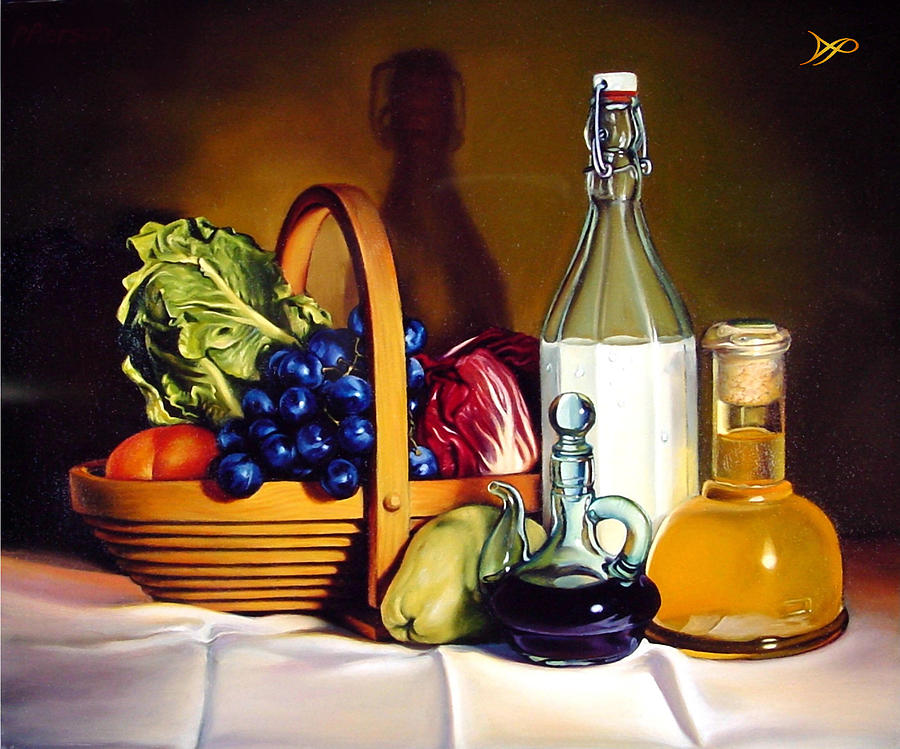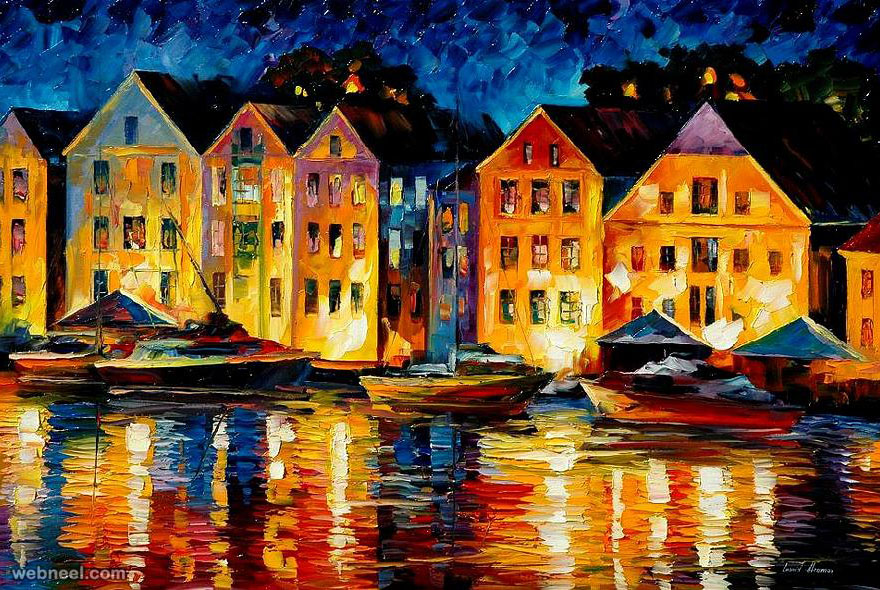Uncover Gorgeous Original Oil Paintings for Sale Online
Uncover Gorgeous Original Oil Paintings for Sale Online
Blog Article
Exploring All Concerning Oil Paints: An Overview to Recognizing Their Elegance and Worth
Oil paints have mesmerized audiences for centuries, supplying a glance right into the creative mastery of various periods. Their abundant history is intertwined with innovative strategies and extensive emotional expression. Comprehending the materials and approaches behind these art work can enhance appreciation. In addition, the marketplace for oil paints provides opportunities for financiers and collectors alike. As one discovers this interesting world, the inquiry develops: what makes an oil painting truly beneficial?
The History of Oil Paint: A Trip With Time
Oil paint has roots that date back to old times, it really prospered during the Renaissance, when musicians discovered its convenience and abundant shade capacity. Early examples can be traced to the 7th century, with strategies progressing notably across societies. The medium ended up being prominent in Northern Europe in the 15th century, particularly with the jobs of artists like Jan van Eyck, that spearheaded its use for in-depth realistic look and vivid shades. This duration marked a departure from tempera paints, permitting greater depth and appearance. As oil painting spread, it affected countless artists, leading to masterpieces by distinguished numbers such as Leonardo da Vinci and Rembrandt. The medium's tradition proceeds, forming the art globe well right into contemporary times.
Recognizing Oil Paints: Products and Techniques
As musicians discover the world of oil paints, they run into a diverse selection of materials and techniques that specify this tool. The primary elements of oil paint include pigments, which provide color, and drying oils, such as linseed, that bind the pigments and assist in application. Various additives can customize the paint's structure and drying out time, boosting versatility. Methods like glazing, where transparent layers are built up, and impasto, which involves applying thick paint, allow for different visual results. Additionally, the use of brushes, scheme blades, and also fingers can produce special appearances and coatings. Recognizing these strategies and products makes it possible for musicians to totally share their creativity and accomplish the wanted effect in their artwork.
The Role of Shade in Oil Paints
Color plays a crucial duty in oil paints, influencing both visual charm and emotional vibration. Recognizing shade concept fundamentals, including the partnerships in between shades, can enhance a musician's capability to convey state of mind and ambience. In addition, understanding color blending methods permits better depth and richness in a paint's palette.

Shade Theory Fundamentals
Comprehending color theory is essential for artists dealing with oil paints, as it creates the foundation for developing visually engaging and unified make-ups. Color concept incorporates the study of exactly how colors interact, the shade wheel, and the partnerships between key, second, and tertiary colors. Artists utilize complementary colors to boost contrasts and produce focal points, while analogous shades advertise unity and cohesiveness within a piece. Additionally, the ideas of cozy and great shades influence the understanding of depth and space in a paint. Comprehending these principles enables musicians to control color properly, directing the visitor's eye and interacting their desired message. Mastery of color concept ultimately enhances a musician's capacity to communicate feelings and concepts through their work.
Psychological Impact of Color
The psychological influence of color in oil paintings plays an essential role in how customers link and regard with art work. Colors evoke certain sensations and state of minds, affecting the visitor's mood. For circumstances, cozy tones like reds and oranges can produce a feeling of heat and power, while amazing tones such as blues and eco-friendlies usually evoke calmness or self-questioning. Artists strategically select shade schemes to enhance narrative elements, leading the audience's emotional journey. The saturation and comparison of colors further magnify these results, attracting attention and creating emphasis. Eventually, the interaction of shades in oil paintings not only enhances their aesthetic charm however additionally works as an effective tool for psychological expression, improving the audience's experience and analysis.
Shade Combining Techniques
While lots of elements of oil paint add to the general structure, grasping color mixing methods is necessary for attaining preferred results and depth. Color blending can be come close to through various approaches, consisting of the additive and subtractive processes. Additive mixing involves combining colors of light, while subtractive blending relies upon pigments, where colors blend to produce new tones. Artists frequently utilize a minimal combination to develop unified works, recognizing the connections between key, secondary, and tertiary shades. Methods such as glazing and scumbling better boost depth check here and luminance. By skillfully blending colors, a musician can evoke feelings, create focal factors, and achieve a feeling of realism, eventually elevating the paint's aesthetic and psychological influence.
Famous Oil Painters and Their Iconic Works

Famous for their proficiency of shade and technique, oil painters have produced a few of the most popular artworks in history. Renowned musicians like Vincent van Gogh captivated audiences with his stirring brushwork in "Starry Night," while Claude Monet's "Perception, Sunup" laid the groundwork for Impressionism. Leonardo da Vinci's "Mona Lisa" remains an enduring sign of imaginative genius, showcasing his ability in recording human expression. Meanwhile, Rembrandt's "The Night Watch" highlights his cutting-edge use light and darkness. Various other remarkable numbers include Pablo Picasso, who transformed modern art with his bold experimentation in jobs like "Les Demoiselles d'Avignon," and Georgia O'Keeffe, whose dynamic depictions of landscapes and blossoms aided define American modernism. Each musician's one-of-a-kind design added significantly to the oil painting landscape.
How to Evaluate the Quality of an Oil Painting
Assessing the quality of an oil painting involves a careful assessment of craftsmanship techniques, as well as an analysis of color and composition. Observing brushwork, layering, and the application of paint can disclose the musician's skill level. Additionally, the interplay of shades and the total setup of aspects contribute considerably to the painting's visual value.
Examining Craftsmanship Techniques
A meticulous assessment of workmanship methods is necessary for establishing the high quality of an oil painting. Critics need to initially check out the application of paint; thick, distinctive brushstrokes may suggest a competent hand, while overly consistent applications might indicate an absence of depth. oil paintings for sale. The layering technique is additionally important; the existence of lusters and differed thickness can enhance luminosity and complexity. In addition, the high quality of the materials utilized, such as the canvas and pigments, plays a significant function in resilience and overall visual. Attention to information in elements like edges and shifts in between shades shows the musician's commitment to their craft. Inevitably, these strategies add to the paint's psychological influence and market price, functioning as indications of the artist's skill and intent
Assessing Shade and Composition
While assessing the top quality of an oil paint, one should concentrate on the interaction of color and composition, as these aspects are essential to the art work's total influence. Color choices can stimulate feelings and develop mood; consequently, the artist's palette ought to be checked out for harmony and contrast. A well-balanced composition guides the audience's eye and produces a feeling of unity. Musicians usually employ techniques like the guideline of thirds or leading lines to improve visual rate of interest. Furthermore, making use of light and shadow can add depth, boosting the three-dimensionality of the paint. Ultimately, an effective oil paint marries color and make-up, involving the viewer and welcoming a deeper appreciation of the artist's vision and technique.
Taking care of and Preserving Oil Paintings
Correct treatment and conservation of oil paintings is vital for preserving their integrity and long life. To shield these art work, it is crucial to display them far from direct sunlight, which can cause fading and discoloration. Maintaining a stable environment with controlled temperature and humidity further aids in stopping damages. Cleaning ought to be done gently using a soft, dry cloth, preventing any severe chemicals that could harm the paint or varnish. Normal assessments for indicators of damage, such as flaking or splitting, are recommended. When delivering or keeping oil paintings, proper extra padding and framework are needed to avoid physical harm. Inevitably, thorough treatment adds to the visual appeal and worth of oil paintings over time.
The Marketplace for Oil Paints: Spending and gathering
Understanding the marketplace dynamics for oil paints is crucial for enthusiasts and financiers alike. The value of these art work is influenced by numerous aspects, including the musician's credibility, historic relevance, and present fads. Collectors usually look for items that reverberate directly while considering possible appreciation in value. Public auctions and galleries offer as primary venues for acquiring and selling, with rates fluctuating based on demand and rarity. Purchasing oil paints calls for study right into the market, as well as an understanding of credibility and provenance. Furthermore, arising musicians might use opportunities for significant returns, while established names can command high prices. In general, a critical strategy to accumulating can produce both aesthetic enjoyment and monetary benefits.

Frequently Asked Concerns
What Are the Ecological Influences of Oil Paint Products?
The environmental effects of oil paint products consist of the release of unstable organic substances (VOCs), damaging waste generation, and resource removal for pigments. These variables add to air pollution and environmental degradation, increasing concerns amongst environmentally mindful musicians and consumers.
Just How Do Different Canvases Impact Oil Paint Results?
Various canvases affect oil paint results considerably. Absorbency, surface area, and structure quality can alter paint application, drying out times, and shade vibrancy. Musicians frequently pick specific canvases to accomplish preferred results and enhance their creative expression.
Can Oil Paintings Be Recovered if Harmed?
If damaged, Oil paintings can certainly be recovered. Specialist conservators utilize various methods to fix rips, tidy surface areas, and address discoloration, guaranteeing that the art work preserves its original beauty and value for future generations.
What Are the Indications of an Original Oil Paint?
The indications of an original oil paint consist of noticeable brush strokes, appearance variants, and an uneven canvas weave (oil paintings for sale). Additionally, authenticity may be confirmed through provenance, signatures, and the presence of a varnish layer distinct to oil mediums
Exactly How Has Innovation Influenced Modern Oil Painting Techniques?
Innovation has considerably affected contemporary oil painting techniques by introducing electronic devices for preparation, improved materials for texture and longevity, and online systems for sharing and marketing art, therefore broadening musicians' innovative possibilities and audience get to. Oil paint has roots that date back to ancient times, it truly prospered throughout the Renaissance, when artists discovered its versatility and abundant shade possibility. The psychological impact of shade in oil paintings plays a vital duty in just how visitors regard and link with artwork. While several facets of oil painting add to the total structure, mastering shade blending techniques is important for achieving wanted results and depth. Assessing the top quality of an oil painting involves a cautious analysis of workmanship strategies, as well as an analysis of shade and composition. While examining the top quality of an oil paint, one must focus on the interplay of color and make-up, as these elements are fundamental to the artwork's overall effect.
Report this page